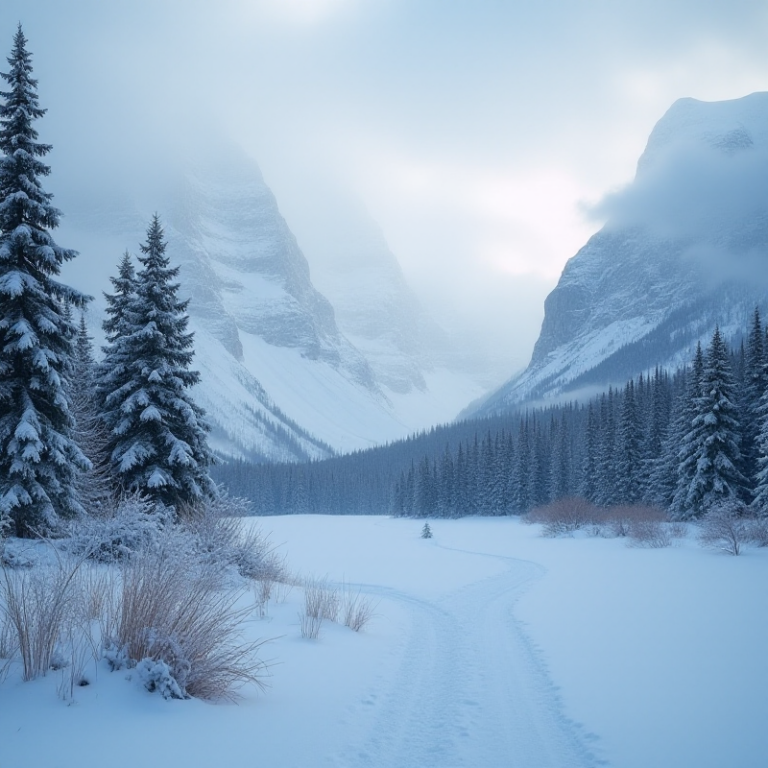Facing Alaska’s Winter Like a Pro
Winter in Alaska isn’t just a season; it’s a test of endurance, preparation, and respect for nature. With temperatures plunging to -40°F or lower, snowdrifts reaching your roof, and only a few hours of daylight, this environment demands readiness. Whether you’re new to Alaska or a seasoned resident, surviving winter here means understanding the land, weather, and your own limits. This guide is your companion for mastering Alaska winter survival, helping you not only endure but thrive.
The Science of Staying Warm
Dressing in Layers
Layering isn’t just advice—it’s a survival skill. Proper clothing can mean the difference between life and death.
- Base Layer
Your base layer’s job is to wick moisture away from your skin. Sweat is your enemy in cold weather. Look for high-quality thermal wear made from merino wool or synthetic materials like polyester. Avoid cotton at all costs; it retains moisture and accelerates heat loss. - Middle Layer
The middle layer traps your body heat. Choose garments like fleece jackets, down vests, or wool sweaters. These materials provide insulation without adding too much bulk. - Outer Layer
The outer layer protects you from wind and moisture. A good parka with a hood, snow pants, and a windproof, waterproof shell is essential. Opt for jackets with fur-lined hoods for added face protection against the wind.
Footwear
Your feet are vulnerable to frostbite. Insulated, waterproof boots rated for sub-zero temperatures are non-negotiable. Pair them with moisture-wicking liners and thick wool socks. Keep spare socks on hand to change into if your feet get wet.
Accessories
- Headgear: Up to 30% of body heat is lost through the head. Wear a thermal hat, and consider a balaclava for face coverage.
- Gloves and Mittens: Gloves are fine for dexterity, but mittens are better for retaining heat. Always have hand warmers in your emergency kit.
- Scarves: Use scarves to shield your neck and lower face from frostbite.
Winter-Proofing Your Home
Your home is your fortress against Alaska’s winter. Without proper preparation, even the most insulated cabin can feel unbearably cold.
Insulation and Heating
- Seal the Cracks
Inspect your home for drafts around windows, doors, and vents. Use caulk, weather stripping, or foam insulation to seal gaps. - Upgrade Insulation
Add insulation to your attic, crawl spaces, and walls. A well-insulated home retains heat longer and uses less energy. - Reliable Heating Systems
- Primary Heat: Ensure your furnace, boiler, or wood stove is in top condition. Schedule maintenance before the first freeze.
- Backup Heat: Always have a secondary heating source, such as a propane heater, with adequate ventilation.
Emergency Power and Lighting
Power outages are common in Alaska’s harsh winters. Prepare for blackouts by:
- Installing a generator with a backup fuel supply.
- Stocking candles, flashlights, and extra batteries.
- Using solar-powered or hand-crank lanterns.
Stockpiling Supplies
Food and Water
- Food: Keep a 30-day supply of non-perishable food, focusing on high-calorie options like canned meats, rice, beans, and dehydrated meals.
- Water: Store at least one gallon per person per day. If your pipes freeze, melt snow or ice for drinking water (boil it first).
Medical Supplies
- Assemble a first-aid kit with bandages, antiseptics, pain relievers, and prescription medications.
- Include items like thermal blankets, hand warmers, and burn creams for emergencies.
Mastering Outdoor Survival
Navigating in Winter Conditions
Alaska’s wilderness is both breathtaking and dangerous. Always carry a survival kit when venturing out.
Essential Gear
- Fire-starting tools (waterproof matches, lighters, magnesium blocks).
- Navigation aids (GPS, compass, detailed maps).
- Emergency shelter (bivvy bag or tarp).
Recognizing Frostbite and Hypothermia
- Frostbite: Look for pale, waxy skin and numbness in extremities. Get indoors immediately and warm the affected area slowly.
- Hypothermia: Symptoms include intense shivering, slurred speech, and confusion. Gradually rewarm the person using blankets and warm liquids.
Surviving Alaska’s Darkness
Coping with Limited Daylight
Winter solstice in Alaska means only a few hours of sunlight—or none if you’re above the Arctic Circle. Combat Seasonal Affective Disorder (SAD) by:
- Using light therapy lamps to mimic natural daylight.
- Keeping a consistent daily routine to maintain mental health.
Conclusion: Resilience in the Face of Winter
Alaska’s winter is not just a season; it’s a way of life. It demands preparation, respect, and adaptability. By dressing appropriately, fortifying your home, and understanding outdoor survival skills, you can face this challenging season with confidence.
Ready for the next chapter? Stay tuned for Part 2 – Spring, where we tackle Alaska’s season of renewal.



